High-power LED packaging technology is still in the ever-changing stage, and there is no standardized packaging form. Therefore, all relevant manufacturers are not actively promoting their own products in order to seek to become one of the future standardized products. This article summarizes the types of high-power LED packages and their technological trends through these products. As international energy exhaustion continues to rise, people are forced to look for new technologies that are energy efficient and environmentally friendly. From the statistical distribution map of energy consumption in the world (Figure 1), indoor lighting accounts for 33% of the total energy consumption, which is the most important project for human energy consumption. It can be seen that if people want to save energy, they must first reduce Lighting power, while solid state lighting (Solid State Lighting) not only has high luminous efficiency but also meets environmental requirements, so it will become the best candidate for general lighting in the future. Based on this, it is expected that the global LED production value market will break through within two years. The $11 billion mark (2010) has become one of the brightest star industries in the technology industry.

Figure 1. Statistical distribution of energy consumption in the world
High-power LED commercial product introduction
  According to a survey by Techno System Research of Japan, the shipment statistics of global white LED manufacturers in 2005 are shown in Figure 2. The top six white LED manufacturers are Nichia, Citizen, Osram, Stanley, Lumileds and Toyoda Gosei. the company. The remaining white LED manufacturers that failed to squeeze into the top six include Cree, Seoul semi, Avago, Dominant, TT Electronics, PerkinElmer, Luminus Devices, Matsushita and Lamina. Among the products sold by these companies, the following five categories can be distinguished according to their packaging technology: 1. Multiple small chips in the PLCC package; 2. Multiple small chips packaged on the substrate; 3. Single large chip on PLCC or ceramic package; 4. Multiple large chips in PLCC, ceramic package or substrate; 5.ACLED. These five types of packaging technologies are superior and competitive, and will be introduced one by one, and in-depth understanding of the differences in their packaging technology.
Figure 2. Number of shipments of white LED manufacturers in 2005
1. Multiple small chips in PLCC package (representative company is Nichia)
The first type of package is mainly to package a plurality of small chips in a PLCC package, and to form a circuit by using a plurality of small chips in parallel, and the current allocated to each small chip is extremely small, generally less than 100 mA. With high input current, high luminous efficiency can be obtained.
2. Multiple small chips are packaged on the substrate (representative company is Citizen)
3. Single large chip in PLCC or ceramic package The third type of package is the most popular target in the market. The choice of chips is mainly in a single large size, generally 40mil, but in the packaging material. There are many options for this: for example: 1. PLCC, 2. Ceramic (Ceramic); 3.MCPCB and so on. The following is a detailed explanation of the three packaging materials and a detailed explanation of the actual products.
(1) Single large chip in flat PLCC package (representative companies are Avago and Dominant)
In terms of PLCC packaging, Avago and Dominant's Moonstone and SPNovaLED products are the most representative. The package design is similar to Nichia's NS6W083A product. They are all flat-paneled and Lens-free, so the package can be effectively reduced. Manufacturing costs, however, also relatively increase the difficulty of secondary optical lens design. Because Moonstone and SPNovaLED products choose large-size chips as the light source, they must pay attention to the heat dissipation performance of their package structure. Therefore, the heat dissipation area of ​​the bottom is larger than that of the NS6W083A, which can effectively transfer heat from the package to the board. To maintain the stability of long-term work.
(2) Single large chip in lens PLCC package (representative company is Lumileds)
Single large chip in ceramic package (representative companies Cree and Lumileds)
4. Many large chips are used in PLCC, ceramic package or substrate. Since the current luminous lumen of the light source is between hundreds and thousands, it is much higher than a single large chip package LED (~100 lm). A combination of multiple high-power LEDs, such as the common 6 LED modules or 12 LED modules, this method is adjustable, easy to maintain and high yield, not only can design different LEDs on the module, but also Arranged into different shapes, but the cost is still high. In order to reduce the cost of packaging and respond to the demand for high output lumens, many related manufacturers have successively developed packaging products with large crystals. For example, Cree exhibited XLamp MC at the Las Vegas International Lighting Exhibition in May this year. E product (shown in Figure 3).
Figure 3. Appearance of XLamp MC-E and OSTAR Headlamp LEDs from Cree and Osram
Manufacturers investing in this type of package are not only Cree and Osram, but also companies such as Lamina, Matsushita and Luminus Devices, such as Lamina, the founder of LTCC-M (LTCC+ Metal Substrate) technology. The main feature is that the low-temperature co-fired ceramic and the metal substrate can be co-fired together, and the heat dissipation performance of the overall ceramic package is improved by the metal substrate with high thermal conductivity. Lamina used this technology to successfully develop the TitanTurbo LED lighting module (shown in Figure 4) last year and was approved by the North American Lighting Engineering Association (IESNA). This product not only has high luminous flux (white light up to 2000 lumens), but also has much better performance in thermal management than traditional lighting fixtures, so it can replace halogen and incandescent lamps in general lighting applications.
Figure 4. TitanTurbo and LUGA LED lighting modules developed by Lamina and Matsushita
5. AC-LED (representative company is Seoul Semiconductor)
It is not difficult to find out from the above that foreign manufacturers are deeply involved in high-power LED packaging technology and are in a leading position. The top five high-power LED suppliers are all foreign manufacturers; in contrast, domestic manufacturers have always focused on followers. The role of non-innovative products has been successfully sold in the market. At present, there is indeed a lack of large-scale enterprises that can integrate upstream, middle and lower reaches, and compete with international-level manufacturers. I hope that this will lead the way for domestic manufacturers to cooperate with each other in the future. Integrate or collaborate to share the lighting pie with international manufacturers such as Philips or Osram.
Encapsulated transformers are low frequency which covered in a thicker coating of insulation than typical. Often the coils are completely encased in epoxy or an epoxy and aggregate mixture. Sometimes they are referred to as [potted" or [cast coil".
The encapsulated design is especially suited for installations in harsh environments where dust, lint, moisture and corrosive contaminants are present. Typical applications include: pulp and paper plants; steel mills; food processing plants; breweries; mines; marine and shipboard installations.
Epoxy resin encapsulated safety isolating transformer PE series
Model: PE4809C-M Power: 0.5VA
This kind of transformer is PCB welding mounting type. The input can be 110V, 220V, 230V, 380V. Output is customized. Both single way and double way are available.
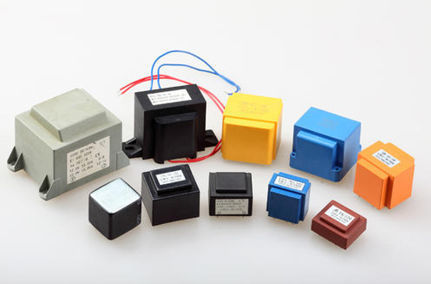


| Type |
Encapsulated Transformer |
| Primary Voltage |
230V |
| Secondary Voltage |
9V |
| Frequency |
50HZ/60HZ |
| Output type |
Single |
| Rated Power |
1.5VA |
| weihgt |
82g |
| Ambient Temperature | Ta70/B |
| Temperature class | Class B(130℃) |
| Coil Structure |
EI |
| Dimension H max | 22.3/24.4mm |
| Dielectric Strength | 230V 4200Vrms |
| Test |
100% |
| OEM & ODM | OEM/ODM |
| Certification |
VDE/CE |
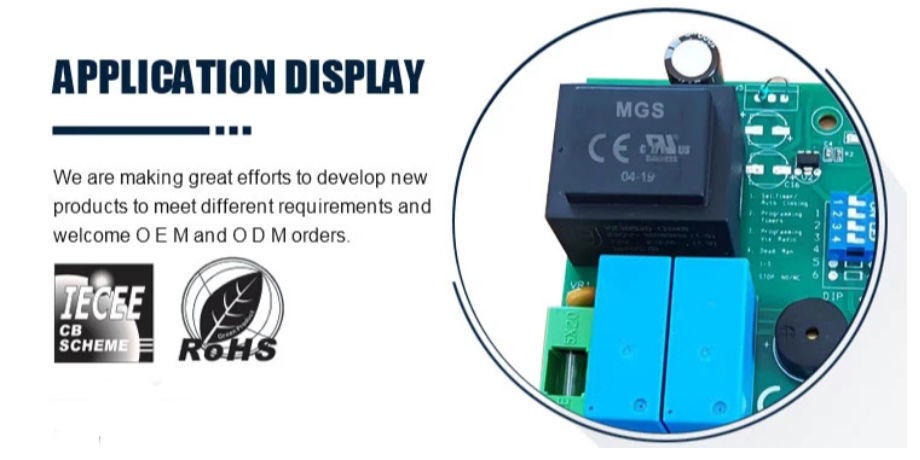
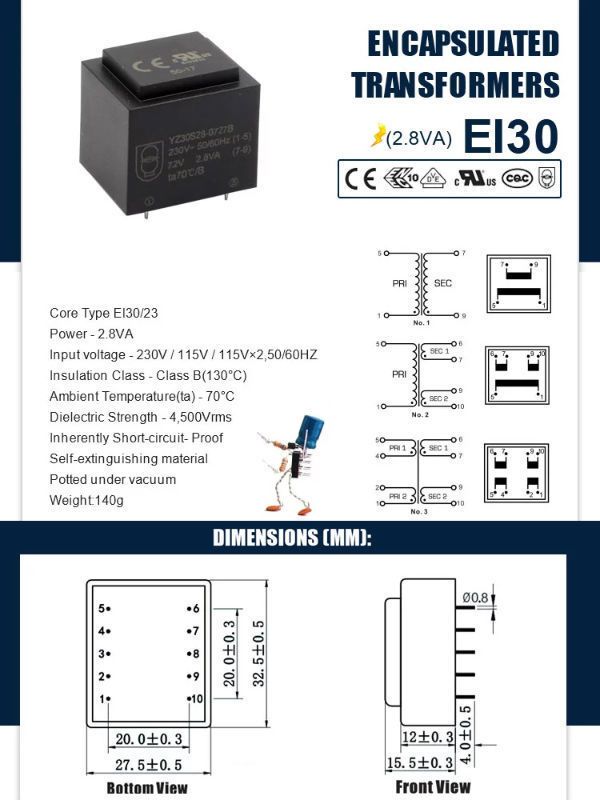

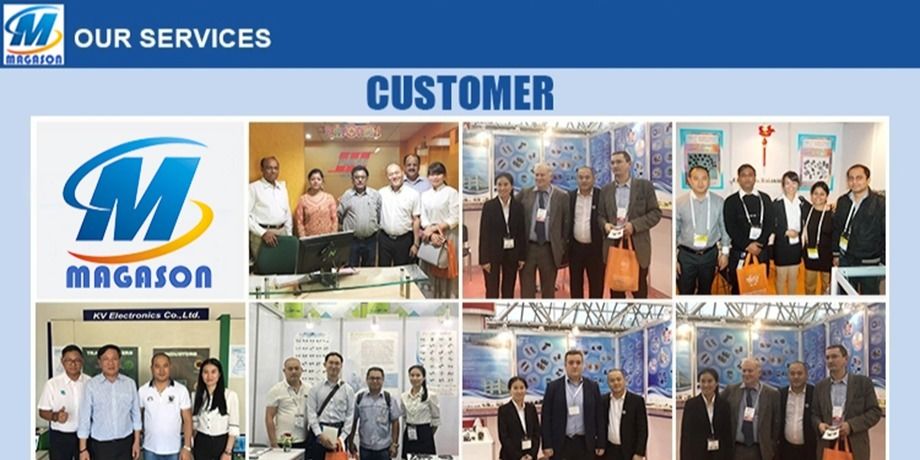
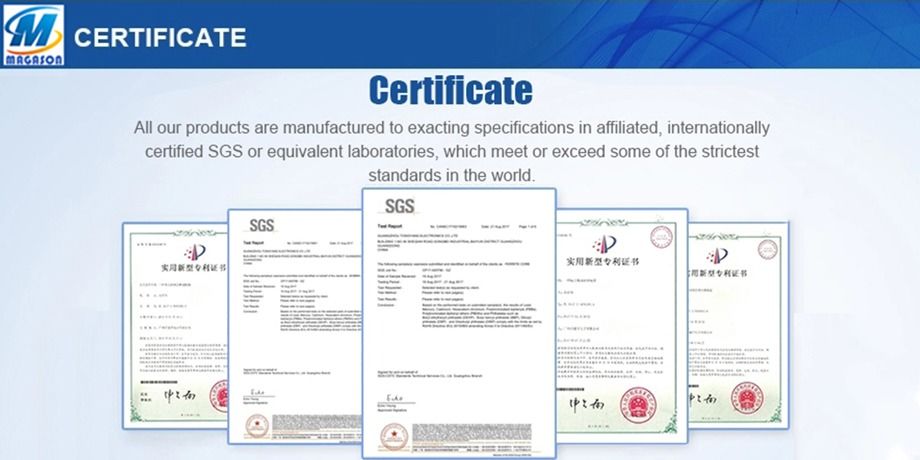
FAQ
1-MOQ?
We will work hard to fit your MOQ .Small purchase quantity is ok.
2-Payment term?
T/T, Western Union, Paypal, Credit Card
3-Delivery port?
Shenzhen, Guangzhou, Zhongshan, Hongkong.
4-Shipping date?
About 7 days when we check the payment.
5-Do you produce the core and bobbin by yourself
Yes.we have 2 head company,1 subsidiary company.one is bobbin factory,one is core factory,last one is transformer factory.
6-Where is your factory?
Shaanxi
Encapsulated Transformer,Step Down Transformer,Pcb Mount Transformer,Low Frequency Transformer
Shaanxi Magason-tech Electronics Co.,Ltd , https://www.magason-tech.com
